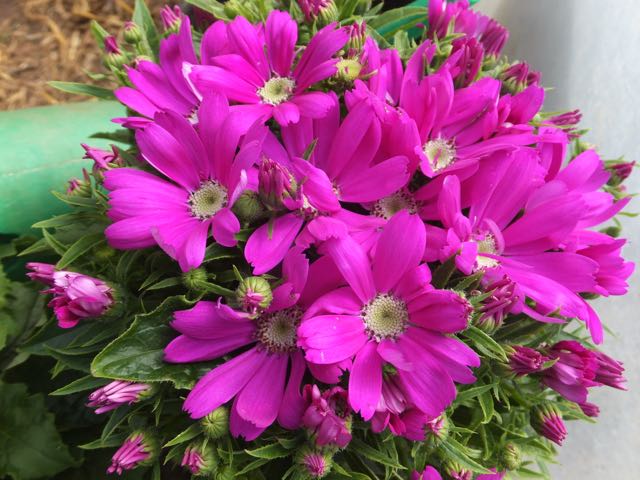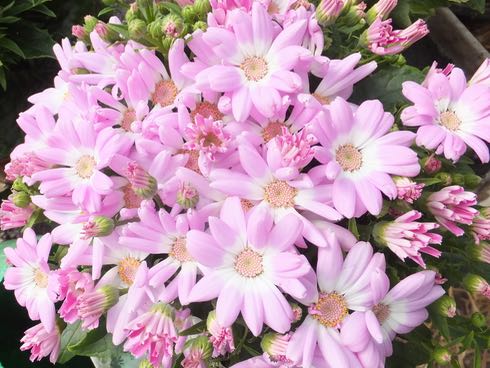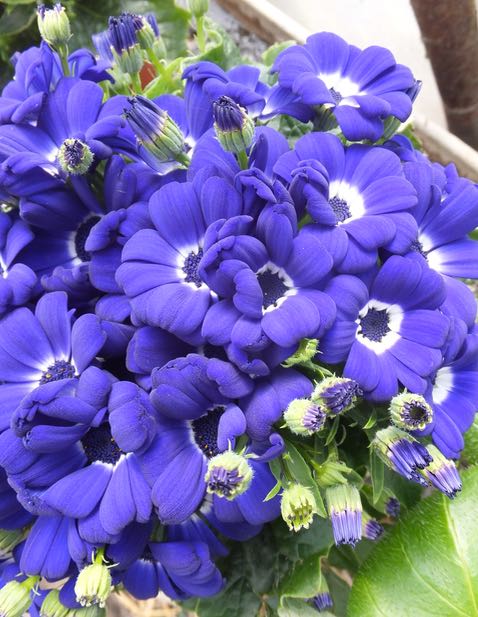
Some plants, and oddly rather many glasshouse plants, have somewhat misleading common names. This gem has perversely come to be known as Cineraria though it is not a Cineraria but a Senecio. Cinerarias are so named for their soft white downy leaves like cineres the Latin for ashes. Some Senecios also have white or grey and downy foliage.
What is odd is this species, variety Spring Glory, barely resembles any of the other plants in either genus as the foliage is green, lush and distinctly herbaceous. It is obviously a plant adapted to moisture and partial shade and not the bright dry conditions it’s numerous silver foliaged relatives are more suited to. Which is odder still as this comes from Tenerife, one of the driest Canary islands off the coast of North Africa from whence it was introduced in 1777.

Anyway Senecio cruentas, Cineraria, Spring Glory, is a delightful long flowering greenhouse jewel that is also an excellent house-plant though unfortunately not long lived. It is grown the first year and then the following spring and summer bursts into a magnificent display of masses of bright daisy like blooms. The original purplish species has been bred to give these an unusually wide range including pinks and maroon reds but also violet blues and many with attractive white rings in their centres.
I said short-lived and although theoretically these may live longer it’s seldom worth persevering with these plants after flowering. It is far more sensible and a better display to sow a new batch from seed each spring or early summer. Reproduction from cuttings is possible but the seed is not expensive and makes much more vigorous plants.

Spring Glory needs frost free conditions with a little warmth to start off but not much heat once in growth. The seedlings need potting on and eventually up into half litre or litre containers by autumn to over-winter and then they will bloom with enthusiasm the next spring on into summer.
Their compost needs to be moist though never wet and an ericaceous mixed with extra grit and leaf mould suits best. Watering should be regular, rainwater of course, and with a liquid feed weekly until autumn. These plants are not happy in hot dry conditions and prefer light shade making them excellent for growing on cool windowsills. These are ideal for setting amongst larger foliage plants when in bloom to add splashes of their most cheerful colours.


